首页 > SCI期刊 > SCIE期刊 > 计算机科学 > 中科院2区 > JCRQ1 > 期刊介绍
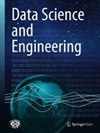
评价信息:
影响因子:5.1
年发文量:33
《数据科学与工程》(Data Science And Engineering)是一本以Engineering-Computational Mechanics综合研究为特色的国际期刊。该刊由Springer Nature出版商刊期4 issues per year。该刊已被国际重要权威数据库SCIE收录。期刊聚焦Engineering-Computational Mechanics领域的重点研究和前沿进展,及时刊载和报道该领域的研究成果,致力于成为该领域同行进行快速学术交流的信息窗口与平台。该刊2023年影响因子为5.1。CiteScore指数值为10.4。
The journal of Data Science and Engineering (DSE) responds to the remarkable change in the focus of information technology development from CPU-intensive computation to data-intensive computation, where the effective application of data, especially big data, becomes vital. The emerging discipline data science and engineering, an interdisciplinary field integrating theories and methods from computer science, statistics, information science, and other fields, focuses on the foundations and engineering of efficient and effective techniques and systems for data collection and management, for data integration and correlation, for information and knowledge extraction from massive data sets, and for data use in different application domains. Focusing on the theoretical background and advanced engineering approaches, DSE aims to offer a prime forum for researchers, professionals, and industrial practitioners to share their knowledge in this rapidly growing area.
It provides in-depth coverage of the latest advances in the closely related fields of data science and data engineering. More specifically, DSE covers four areas: (i) the data itself, i.e., the nature and quality of the data, especially big data; (ii) the principles of information extraction from data, especially big data; (iii) the theory behind data-intensive computing; and (iv) the techniques and systems used to analyze and manage big data. DSE welcomes papers that explore the above subjects. Specific topics include, but are not limited to: (a) the nature and quality of data, (b) the computational complexity of data-intensive computing,(c) new methods for the design and analysis of the algorithms for solving problems with big data input,(d) collection and integration of data collected from internet and sensing devises or sensor networks, (e) representation, modeling, and visualization of big data,(f) storage, transmission, and management of big data,(g) methods and algorithms of data intensive computing, such asmining big data,online analysis processing of big data,big data-based machine learning, big data based decision-making, statistical computation of big data, graph-theoretic computation of big data, linear algebraic computation of big data, and big data-based optimization. (h) hardware systems and software systems for data-intensive computing, (i) data security, privacy, and trust, and(j) novel applications of big data.
《数据科学与工程》(DSE)杂志响应了信息技术发展重点从 CPU 密集型计算到数据密集型计算的显著变化,其中数据(尤其是大数据)的有效应用变得至关重要。新兴学科数据科学与工程是一门跨学科领域,整合了计算机科学、统计学、信息科学和其他领域的理论和方法,专注于数据收集和管理、数据集成和关联、从海量数据集中提取信息和知识以及在不同应用领域使用数据的高效技术和系统的基础和工程。DSE 专注于理论背景和先进的工程方法,旨在为研究人员、专业人士和行业从业者提供一个主要论坛,分享他们在这个快速增长领域的知识。
它深入报道了数据科学和数据工程密切相关领域的最新进展。更具体地说,DSE 涵盖四个领域:(i)数据本身,即数据(尤其是大数据)的性质和质量;(ii)从数据(尤其是大数据)中提取信息的原理; (iii) 数据密集型计算背后的理论;(iv) 用于分析和管理大数据的技术和系统。DSE 欢迎探讨上述主题的论文。具体主题包括但不限于:(a) 数据的性质和质量;(b) 数据密集型计算的计算复杂性;(c) 用于解决大数据输入问题的算法的设计和分析的新方法;(d) 从互联网和传感设备或传感器网络收集的数据的收集和集成;(e) 大数据的表示、建模和可视化;(f) 大数据的存储、传输和管理;(g) 数据密集型计算的方法和算法,如大数据挖掘、大数据在线分析处理、基于大数据的机器学习、基于大数据的决策、大数据统计计算、大数据图论计算、大数据线性代数计算以及基于大数据的优化。 (h) 数据密集型计算的硬件系统和软件系统,(i) 数据安全、隐私和信任,以及(j) 大数据的新应用。
如果您需要协助投稿或润稿服务,您可以咨询我们的客服老师。我们专注于期刊咨询服务十年,熟悉发表政策,可为您提供一对一投稿指导,避免您在投稿时频繁碰壁,节省您的宝贵时间,有效提升发表机率,确保SCI检索(检索不了全额退款)。我们视信誉为生命,多方面确保文章安全保密,在任何情况下都不会泄露您的个人信息或稿件内容。
2023年12月升级版
| 大类学科 | 分区 | 小类学科 | 分区 | Top期刊 | 综述期刊 |
| 计算机科学 | 2区 | COMPUTER SCIENCE, INFORMATION SYSTEMS 计算机:信息系统 COMPUTER SCIENCE, THEORY & METHODS 计算机:理论方法 | 2区 2区 | 否 | 否 |
基础版:即2019年12月17日,正式发布的《2019年中国科学院文献情报中心期刊分区表》;将JCR中所有期刊分为13个大类,期刊范围只有SCI期刊。
升级版:即2020年1月13日,正式发布的《2019年中国科学院文献情报中心期刊分区表升级版(试行)》,升级版采用了改进后的指标方法体系对基础版的延续和改进,影响因子不再是分区的唯一或者决定性因素,也没有了分区的IF阈值期刊由基础版的13个学科扩展至18个,科研评价将更加明确。期刊范围有SCI期刊、SSCI期刊。从2022年开始,分区表将只发布升级版结果,不再有基础版和升级版之分,基础版和升级版(试行)将过渡共存三年时间。
JCR分区等级:Q1
| 按JIF指标学科分区 | 收录子集 | 分区 | 排名 | 百分位 |
| 学科:COMPUTER SCIENCE, INFORMATION SYSTEMS | ESCI | Q1 | 43 / 249 |
82.9% |
| 学科:COMPUTER SCIENCE, THEORY & METHODS | ESCI | Q1 | 19 / 143 |
87.1% |
| 按JCI指标学科分区 | 收录子集 | 分区 | 排名 | 百分位 |
| 学科:COMPUTER SCIENCE, INFORMATION SYSTEMS | ESCI | Q2 | 72 / 251 |
71.51% |
| 学科:COMPUTER SCIENCE, THEORY & METHODS | ESCI | Q1 | 24 / 143 |
83.57% |
| Gold OA文章占比 | 研究类文章占比 | 文章自引率 |
| 100.00% | 90.91% | 0.02... |
| 开源占比 | 出版国人文章占比 | OA被引用占比 |
| 0.98... | -- | -- |
名词解释:JCR分区在学术期刊评价、科研成果展示、科研方向引导以及学术交流与合作等方面都具有重要的价值。通过对期刊影响因子的精确计算和细致划分,JCR分区能够清晰地反映出不同期刊在同一学科领域内的相对位置,从而帮助科研人员准确识别出高质量的学术期刊。
| CiteScore | SJR | SNIP | CiteScore 指数 | ||||||||||||||||||||
| 10.4 | 1.836 | 3.246 |
|
名词解释:CiteScore是基于Scopus数据库的全新期刊评价体系。CiteScore 2021 的计算方式是期刊最近4年(含计算年度)的被引次数除以该期刊近四年发表的文献数。CiteScore基于全球最广泛的摘要和引文数据库Scopus,适用于所有连续出版物,而不仅仅是期刊。目前CiteScore 收录了超过 26000 种期刊,比获得影响因子的期刊多13000种。被各界人士认为是影响因子最有力的竞争对手。
历年中科院分区趋势图
历年IF值(影响因子)
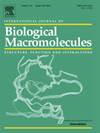
中科院分区:1区
影响因子:7.7
审稿周期:约Time to first decision: 9 days; Review time: 64 days; Submission to acceptance: 82 days; 约2.7个月 约7.8周
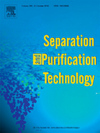
中科院分区:1区
影响因子:8.1
审稿周期:约Time to first decision: 6 days; Review time: 44 days; Submission to acceptance: 54 days; 约4.1个月 约6.8周
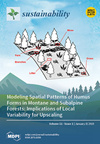
中科院分区:3区
影响因子:3.3
审稿周期:约17.72天 11 Weeks
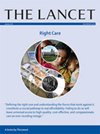
中科院分区:1区
影响因子:98.4
审稿周期: 约3月
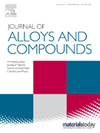
中科院分区:2区
影响因子:5.8
审稿周期: 约2.4个月 约7.6周

中科院分区:2区
影响因子:5.1
审稿周期: 约1.9个月 约2.7周
本站合法持有《出版物经营许可证》,仅销售经国家新闻出版署批准的合法期刊,不是任何杂志官网,不涉及出版事务。本站仅提供有限咨询服务,需要用户自己向出版商投稿且没有绿色通道,是否录用一切以出版商通知为准。提及的第三方名称或商标,其知识产权均属于相应的出版商或期刊,本站与上述机构无从属关系,所有引用均出于解释服务内容的考量,符合商标法规范。本页信息均由法务团队进行把关,若期刊信息有任何问题,请联系在线客服,我们会认真核实处理。 若用户需要出版服务,请联系出版商。